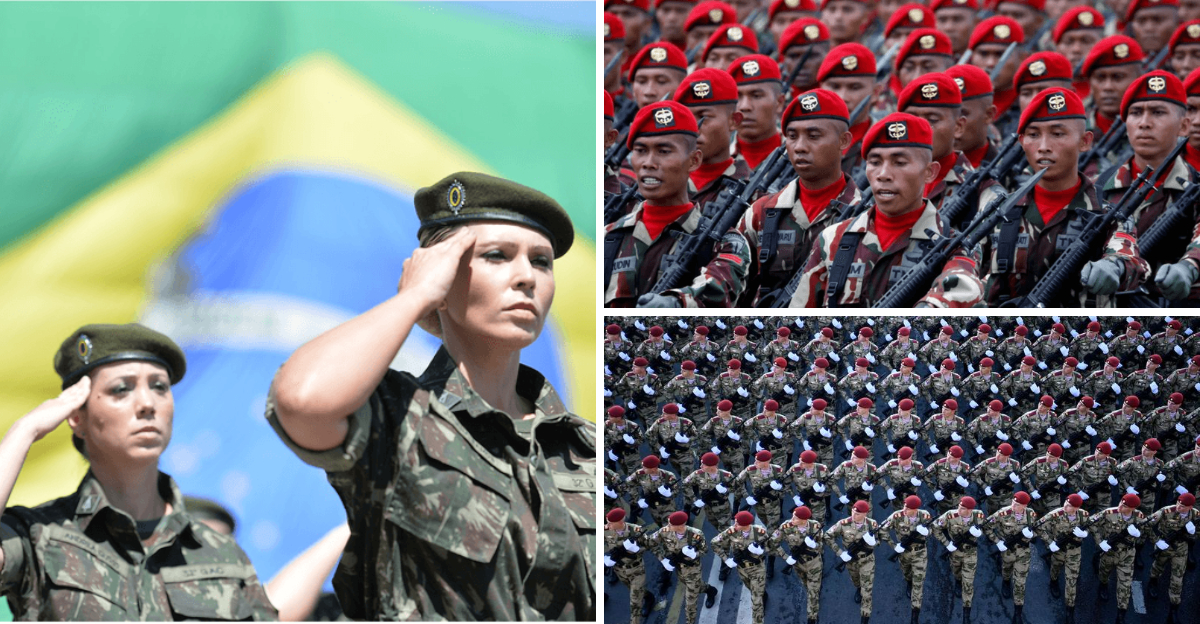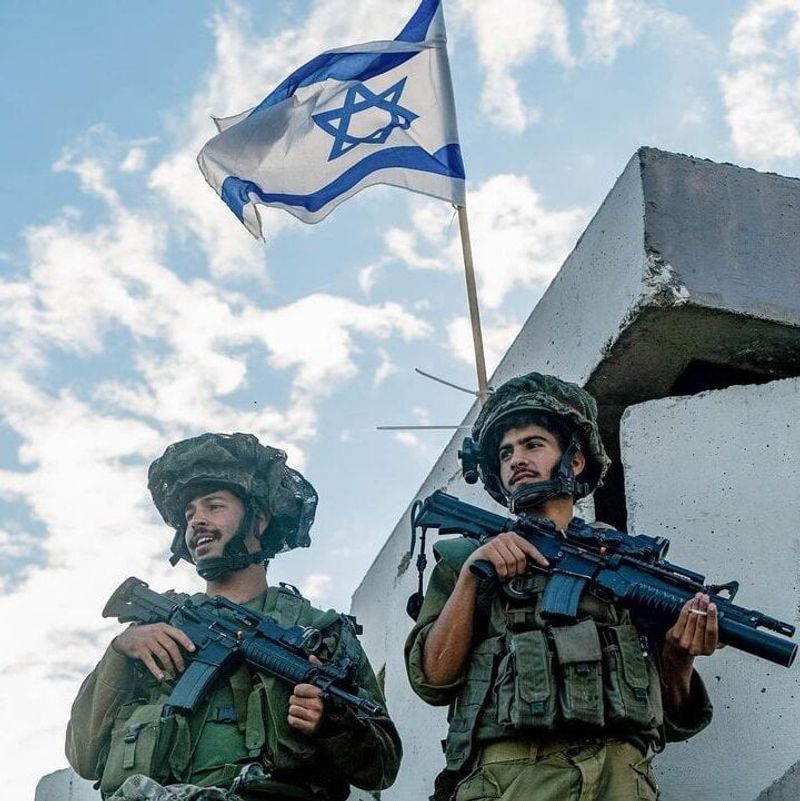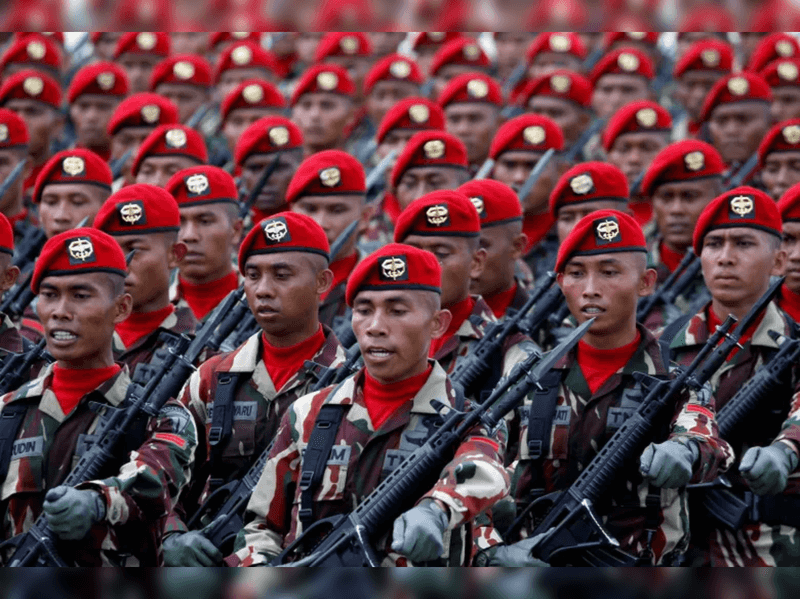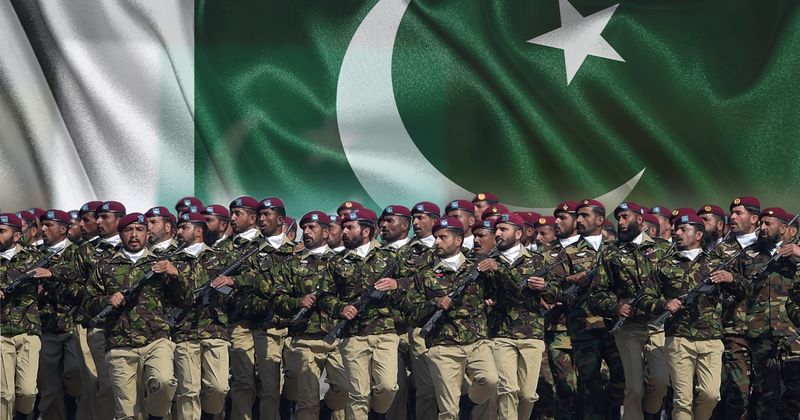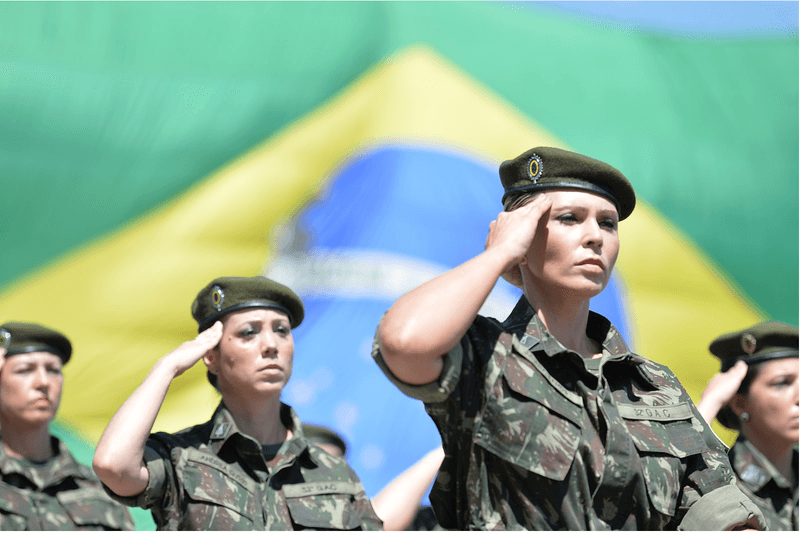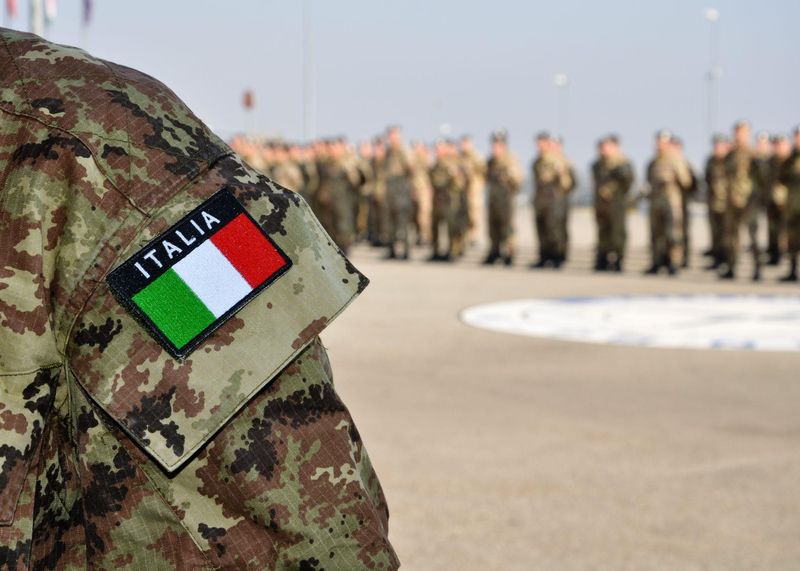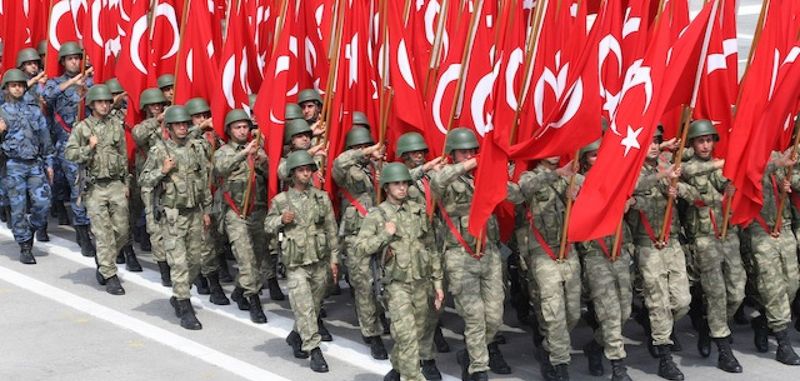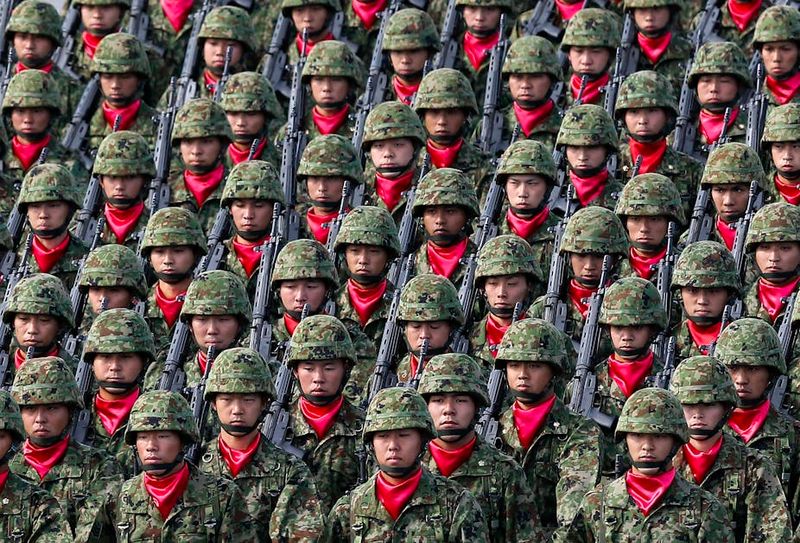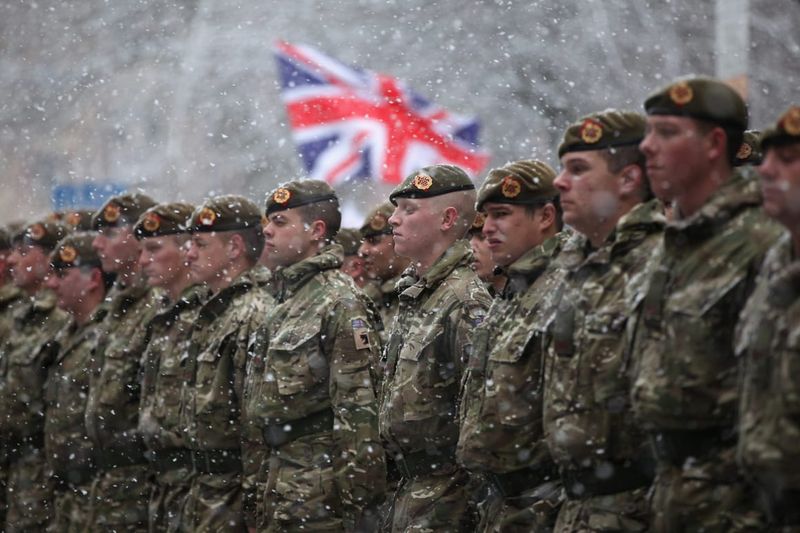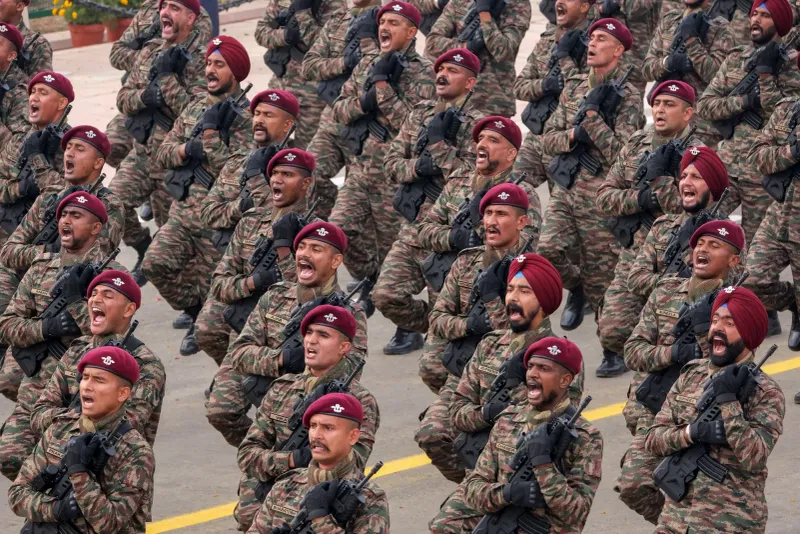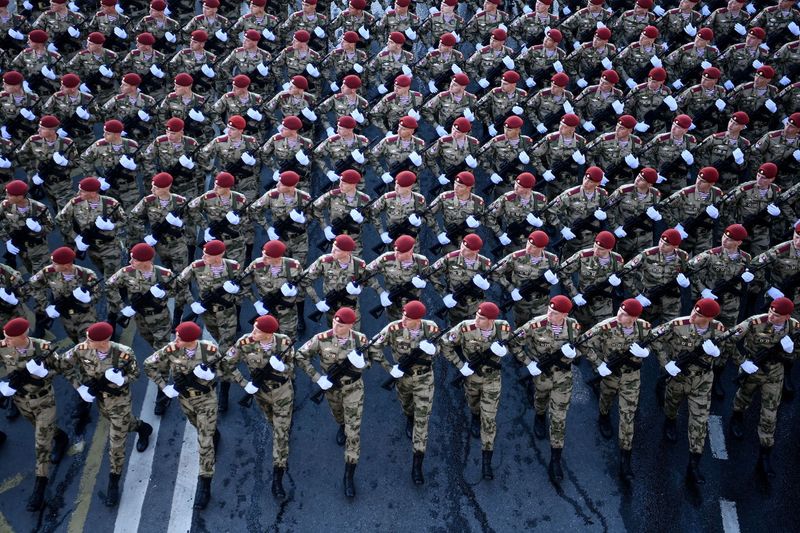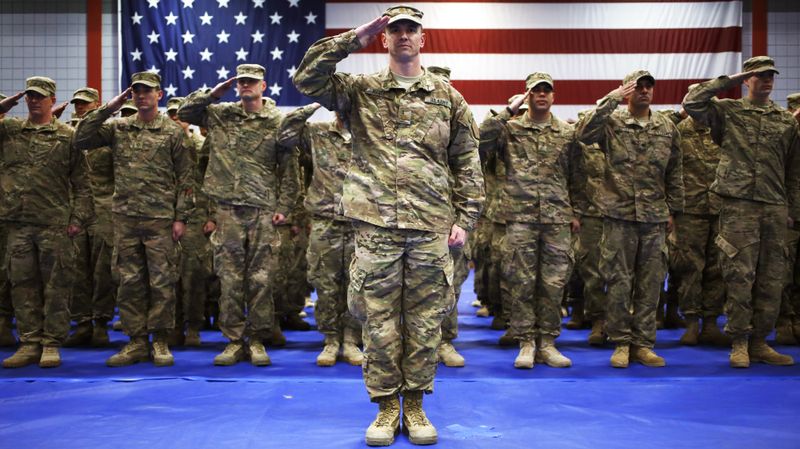Since the end of World War II, certain nations have built military forces that changed the global balance of power. These countries invested heavily in advanced weapons, large armies, and cutting-edge technology.
Understanding which countries possess the strongest military capabilities helps explain international politics and security challenges facing our world today.
15. Israel: The Middle East’s Military Powerhouse
Born through conflict, Israel’s military stands as one of the most battle-tested forces in modern history. Their advanced technology includes the Iron Dome defense system that intercepts incoming rockets with remarkable accuracy.
Israel maintains mandatory military service for most citizens, creating a large reserve force ready for rapid mobilization. Their intelligence agency, Mossad, is renowned worldwide for its effectiveness and reach.
Despite its small size, Israel’s military advantage comes from cutting-edge weapons development, exceptional training, and the strategic necessity of maintaining overwhelming defensive capabilities against neighboring threats.
14. Germany: Rebuilt Military Excellence
After World War II restrictions, Germany transformed its military into a disciplined, technologically advanced force. The Bundeswehr now serves as a cornerstone of European defense, participating in NATO operations worldwide while maintaining strict constitutional limits on military deployments.
German engineering excellence shines through their Leopard tanks and sophisticated naval vessels. Their defense industry produces some of the world’s most advanced conventional weapons systems, exported globally.
Rather than seeking military dominance, modern Germany focuses on collective security, peacekeeping, and humanitarian operations while gradually increasing defense spending to meet regional security challenges.
13. Indonesia: Rising Naval Power
Spanning thousands of islands, Indonesia’s military focuses on protecting its vast maritime territory. As Southeast Asia’s largest country, Indonesia maintains significant ground forces alongside an expanding naval fleet designed to secure critical shipping lanes and natural resources.
The TNI (Indonesian National Armed Forces) has modernized substantially in recent decades, acquiring advanced fighter jets and warships. Their special forces, Kopassus, are regarded as among the most effective in the region.
Strategic location between the Indian and Pacific Oceans makes Indonesia increasingly important in regional security architecture, with military partnerships expanding beyond traditional allies.
12. Pakistan: Nuclear-Armed Defense Force
Pakistan’s military evolution was shaped by regional tensions, particularly with neighboring India. Their nuclear arsenal, developed in the 1990s, dramatically changed South Asian security dynamics and brought international attention to this military force.
The Pakistani Army remains the dominant branch, with over 500,000 active personnel supported by locally manufactured equipment alongside Chinese and American technology. Their Inter-Services Intelligence (ISI) plays a significant role in both military and political affairs.
Special operations units like the SSG (Special Service Group) have gained battlefield experience through counter-insurgency operations along the Afghan border.
11. Brazil: South American Military Leader
Commanding the largest military in Latin America, Brazil maintains forces capable of defending its vast territory and resources. Their unique capabilities include specialized jungle warfare units operating in the Amazon rainforest, considered among the world’s best in difficult terrain operations.
Brazil’s defense industry produces indigenous equipment ranging from armored vehicles to training aircraft. Their navy operates the region’s only aircraft carrier, though aging, alongside a submarine fleet currently being expanded with nuclear-powered vessels.
Brazilian forces regularly contribute to UN peacekeeping missions worldwide, demonstrating both capability and commitment to international security beyond their borders.
10. Italy: Mediterranean Naval Force
Italy’s strategic position in the Mediterranean shapes its military priorities, with a strong emphasis on naval power projection. Their carriers and amphibious assault ships enable operations across the Mediterranean and beyond, supporting NATO missions and humanitarian operations.
Elite units like the San Marco Marine Brigade and Col Moschin special forces maintain high readiness for rapid deployment. The Carabinieri, a military police force, serves both domestic and international security functions, including counter-terrorism operations.
Italian aerospace industry contributes significantly to their air power, participating in multinational projects like the Eurofighter Typhoon while maintaining specialized capabilities for Mediterranean security challenges.
9. Turkey: NATO’s Eastern Guardian
Straddling Europe and Asia, Turkey maintains the second-largest military in NATO with over 400,000 active personnel. Their strategic location controlling access to the Black Sea through the Bosporus Strait gives them significant geopolitical importance.
Turkish defense industries have grown rapidly, now producing indigenous tanks, drones, and naval vessels. Their Bayraktar drones gained international attention for their effectiveness in recent conflicts, becoming a major export product.
Extensive combat experience from operations in Syria, Libya, and against internal insurgencies has shaped a battle-hardened force capable of sustained operations across multiple fronts simultaneously.
8. Japan: Maritime Self-Defense Excellence
Despite constitutional limitations on offensive capabilities, Japan’s Self-Defense Forces have evolved into one of Asia’s most technologically advanced militaries. Their navy operates some of the world’s most sophisticated destroyers equipped with advanced Aegis combat systems.
Japanese submarine forces maintain quiet diesel-electric vessels perfect for patrolling regional waters. Their Air Self-Defense Force flies modern F-35 stealth fighters alongside indigenous support aircraft, creating a formidable defensive network.
Recent policy shifts have allowed greater participation in international security operations while maintaining Japan’s defensive posture. Their military technology often represents cutting-edge capabilities wrapped in a constitutionally limited framework.
7. France: Nuclear-Powered Global Force
France maintains complete military independence with its nuclear triad of air, land, and sea-based weapons. Their aircraft carrier Charles de Gaulle projects power far beyond French borders, supporting operations across Africa and the Middle East.
The French Foreign Legion continues its legendary status as an elite fighting force accepting international recruits. Their special forces units operate with high autonomy in conflict zones worldwide, particularly across former colonial territories in Africa.
France’s defense industry produces everything from Rafale fighter jets to nuclear submarines, making them one of few nations capable of designing and building all major weapons systems independently.
6. United Kingdom: Naval Tradition Meets Modern Warfare
Britain’s military heritage continues through its professional all-volunteer force equipped with nuclear submarines, aircraft carriers, and special forces units. The Royal Navy’s new Queen Elizabeth-class carriers restore power projection capabilities that complement their nuclear deterrent submarine force.
British special forces, particularly the SAS, maintain elite status globally, influencing similar units worldwide. Their intelligence capabilities, working closely with military operations, provide significant advantages in conflict zones.
Though smaller than during imperial times, British forces maintain expeditionary capabilities allowing deployment anywhere globally, supported by overseas territories and defense agreements that extend their strategic reach beyond the size of their standing military.
5. South Korea: Technology-Driven Defense
Facing constant North Korean threats, South Korea developed formidable defensive capabilities supported by universal male conscription and advanced technology. Their K2 Black Panther tanks and K9 Thunder artillery systems represent some of the most advanced conventional weapons available today.
South Korean shipyards produce cutting-edge destroyers and submarines that patrol contested waters around the peninsula. Their indigenous aerospace industry now develops advanced fighter jets while their military operates American F-35 stealth fighters.
Cyber warfare capabilities receive significant investment, recognizing North Korea’s digital threat alongside conventional forces. South Korea’s military transformation from American-dependent force to technological innovator represents one of the most successful defense developments since WWII.
4. India: Rising Military Superpower
Maintaining the world’s second-largest active military personnel count, India’s forces secure vast borders facing multiple security challenges. Their nuclear weapons program provides strategic deterrence while their conventional forces grow increasingly sophisticated.
India operates one of few active aircraft carriers in Asia, emphasizing their naval ambitions in the Indian Ocean. Their domestic defense industry produces increasingly sophisticated equipment, though Russian weapons still form the backbone of many units.
Special forces units like the Para Commandos and Marcos conduct operations in environments ranging from Himalayan mountains to maritime domains. Recent modernization efforts aim to transform India’s military from a large conventional force into a technologically advanced power capable of addressing regional challenges.
3. China: Rapidly Modernizing Giant
China’s military transformation represents perhaps the most significant shift in global power since WWII. The People’s Liberation Army has evolved from a massive but technologically limited force into a sophisticated military with global reach.
Their navy now operates aircraft carriers, advanced nuclear submarines, and the world’s largest fleet by ship count. Hypersonic weapons, stealth aircraft, and space-based capabilities demonstrate their technological advancement beyond simply copying foreign designs.
Massive investment in artificial intelligence, quantum computing, and cyber warfare capabilities indicates China’s focus on dominating future conflict domains while their conventional forces continue expanding with indigenous equipment replacing older Soviet-designed systems.
2. Russia: Nuclear Arsenal and Military Tradition
Inheriting the Soviet military legacy, Russia maintains the world’s largest nuclear arsenal alongside modernized conventional forces. Their strategic rocket forces operate intercontinental ballistic missiles that remain central to their defense doctrine and global influence.
Russian special operations forces demonstrated sophisticated capabilities in Crimea and Syria, showing tactical evolution beyond Soviet-era approaches. Their defense industry continues producing advanced systems like S-400 air defenses and hypersonic missiles that challenge Western technological advantages.
Despite economic constraints limiting some modernization efforts, Russia’s military remains capable of power projection across its near abroad while strategic forces ensure global relevance despite the Soviet collapse.
1. United States: Unmatched Global Military Power
America’s military dominance since WWII stems from unparalleled investment, technological innovation, and global presence. With nearly 800 overseas bases, the US projects power worldwide through carrier strike groups, strategic bombers, and special operations forces deployed across every continent.
The technological edge remains evident in stealth aircraft, networked battle systems, and precision weapons that define modern warfare. Their nuclear triad of submarines, bombers, and intercontinental missiles provides strategic deterrence while conventional forces conduct operations globally.
Perhaps most significantly, American military power combines with economic and diplomatic influence to shape international security architecture through alliances, partnerships, and institutions that multiply their direct military capabilities.
